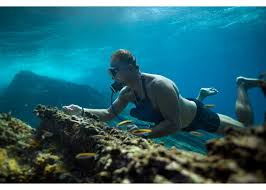When traveling with portable scuba tanks, divers must follow key regulations: FAA allows empty tanks (under 50 psi) as carry-ons, while pressurized tanks require hazardous material labels and airline approval; DOT-approved tanks (3-6L common) must pass hydrostatic testing every 5 years; international flights often ban pressurized tanks outright; always detach regulators and check local laws, as some destinations like Hawaii restrict certain tank materials; train operators may require special documentation for tanks exceeding 1kg weight—plan ahead to avoid fines or delays. (60 words)
Airline Pressure Rules for Portable Scuba Tanks
The FAA (Federal Aviation Administration) and IATA (International Air Transport Association) mandate that tanks must be completely empty (below 50 psi / 3.4 bar) to fly as carry-on or checked baggage. Pressurized tanks above this limit require special hazardous materials (HAZMAT) labeling, airline approval, and sometimes even a shipper’s declaration.
If your tank exceeds 200 psi (13.8 bar), it may be classified as a DOT (Department of Transportation) hazardous material, requiring extra paperwork. Some airlines charge 200 per tank for HAZMAT handling, and failing to comply can lead to confiscation or fines up to $1,000.
What Divers Need to Know
Even a small residual pressure (like 60 psi) can trigger security checks. Use a pressure gauge to confirm it’s below 50 psi, and leave the valve open during transit to prove it’s empty. Some divers remove the valve entirely, but this isn’t always necessary—check with your airline.
Aluminum 80-cubic-foot tanks (11L volume, 3,000 psi when full) are common, but airlines don’t care about size—only pressure. A steel 6L tank at 50 psi is fine, while the same tank at 100 psi could be rejected.
The EU and Australia often ban all pressurized tanks, even with paperwork. In the U.S., the TSA may inspect tanks separately, so arrive early.
Others use compact pony bottles (under 3L), which sometimes bypass strict rules.
Tank Size Limits for Airline Travel
The most commonly accepted portable scuba tanks for air travel are aluminum 80-cubic-foot (11L) tanks, which weigh around 31 lbs (14 kg) when empty. However, many airlines enforce a checked baggage weight limit of 50 lbs (23 kg) per item, meaning even a standard tank can eat up a significant portion of your allowance.
Some airlines, like Emirates and Singapore Airlines, allow tanks up to 6.8 lbs (3.1 kg) as carry-ons, but only if they’re under 22 x 14 x 9 inches (56 x 36 x 23 cm)—dimensions that exclude most standard scuba tanks. Budget carriers like Spirit and Frontier often reject tanks outright if they exceed 62 linear inches (length + width + height), forcing divers to pay oversized baggage fees of 150 per item.
Key Considerations for Tank Size
- Standard Aluminum 80 (11L): 23.5 inches (60 cm) tall, 7.25 inches (18.4 cm) diameter, 31 lbs (14 kg) empty—acceptable on most full-service airlines if within weight limits.
- Compact Steel Tanks (6L or smaller): 18–20 inches (45–50 cm) tall, 6.5 inches (16.5 cm) diameter, 22–26 lbs (10–12 kg) empty—better for avoiding excess fees.
- Pony Bottles (3L or smaller): 12–15 inches (30–38 cm) tall, 4–5 inches (10–13 cm) diameter, 8–12 lbs (3.6–5.4 kg) empty—often allowed as carry-ons if drained.
How Airlines Enforce Size Limits
Delta and American Airlines typically allow tanks up to 50 lbs (23 kg) in checked luggage, but anything larger requires prior approval and additional fees. Qantas and Air New Zealand impose stricter rules, with a maximum linear dimension of 79 inches (200 cm) for checked scuba gear, including tanks.
However, Asian airlines like Cathay Pacific and ANA often treat tanks as special items, requiring advance notice and sometimes charging 200 for oversized handling.
Workarounds for Divers
One solution is to rent tanks at your destination, which eliminates travel hassles and costs 30 per day at most dive shops. Another option is collapsible travel tanks, which fold down to 60% of their full size when empty. These are pricier (600) but can save money on baggage fees over time.

Testing & Expiry Dates for Scuba Tanks
In the U.S., the Department of Transportation (DOT) requires hydrostatic testing every 5 years for aluminum tanks and 3 years for steel tanks, with visual inspections needed annually. Fail to comply, and dive shops won’t fill your tank, airlines won’t transport it, and you could be stuck with a $500 paperweight.
During a hydro test, technicians pressurize the tank to 5/3 of its working pressure (so a 3,000 psi tank gets pumped to 5,000 psi) to check for leaks or deformations. About 2-3% of tanks fail these tests, usually due to internal corrosion or external damage. The test itself costs 75, plus another 25 for a visual inspection. Some shops bundle both for 90, but prices vary by location.
How to Read Your Tank’s Expiry Dates
Scuba tanks don’t have a simple "best by" sticker. Instead, they use a coded stamp system near the neck:
- DOT-3AL: Aluminum tanks (most common for diving)
- DOT-3AA: Steel tanks (common in technical diving)
- Plus signs (+): Indicates higher service pressure rating
The hydrostatic test date is stamped in month/year format (e.g., "6/25" for June 2025), followed by the tester’s ID. If your tank is overdue, even by a day, most fill stations will turn you away. Some countries, like Australia and Canada, enforce even stricter rules—annual hydro tests for all tanks, regardless of material.
What Happens If You Ignore Testing?
A compromised tank can rupture at depth, with explosive force. In 2019, a failed hydro test caused a tank to burst at a Florida dive shop, shattering windows and injuring two staff. The repair bill topped $12,000—far more than the cost of regular testing.
One diver in Hawaii had to pay $200 for emergency testing after being grounded with an overdue tank.
Pro Tips for Tank Longevity
- Store tanks with 100–200 psi to prevent moisture ingress
- Rinse after saltwater use to avoid corrosion
- Avoid direct sunlight, which degrades tank coatings
- Check visual inspection stickers annually (they last 12 months)
Bottom line: Budget 100 yearly for maintenance, and always check dates before traveling.
International Flight Bans on Scuba Tanks
Japan's Ministry of Land, Infrastructure, Transport and Tourism bans all aluminum tanks due to corrosion risks, while Singapore's Civil Aviation Authority imposes a complete prohibition on tanks over 2kg without prior approval. These rules aren't just inconvenient—they're strictly enforced. In 2022, 37% of divers arriving at Bali's Ngurah Rai Airport reported having their tanks confiscated because they lacked proper paperwork. The average fine for non-compliance ranges from 500, plus the cost of renting replacement gear.
Country-Specific Scuba Tank Regulations
Here's what divers face when flying internationally:
- United Kingdom: Empty tanks allowed with hydro test certificates no older than 3 years
- New Zealand: Requires dual certification (DOT and local hydro test) for any imported tank
- United Arab Emirates: Bans steel tanks completely; aluminum tanks need pre-approval 72 hours before flight
- South Africa: Only permits tanks with visual inspection stamps less than 12 months old
- Maldives: All dive gear must be pre-registered with resorts before arrival
Budget carriers like AirAsia and Scoot simply refuse all diving equipment unless it's shipped as cargo—a process that costs 300 per tank and takes 3–5 business days.
Why These Bans Exist
The reasoning behind these restrictions comes down to three key factors:
- Metal fatigue concerns: Older tanks (especially aluminum) can develop stress fractures invisible to the naked eye
- Pressure risks at altitude: Even "empty" tanks retain some residual gas that expands during flight
- Corrosion from saltwater exposure: Coastal airports worry about tank integrity after ocean use
In 2021, a partially filled tank exploded in the cargo hold of a flight from Thailand to Germany, forcing an emergency landing. The subsequent investigation revealed the tank had passed visual inspection but failed internal corrosion tests.
How to Navigate International Bans
Smart divers use these strategies:
- Rent tanks locally: Costs 40/day at most tropical dive destinations
- Ship tanks as freight: Requires UN-certified packaging and adds 4–7 days to delivery
- Use collapsible travel tanks: Models like the XS Scuba Travel Tank meet most airline size limits
Bottom line: Email copies of your hydro test certificates to the airline at least 14 days before departure, and always carry printed copies.
Packing & Labeling Tips for Traveling with Scuba Tanks
For example, the TSA reports that 23% of scuba-related baggage inspections occur because tanks weren’t properly labeled or stored. A poorly packed tank can also damage other luggage, with repair claims averaging 300 per incident.
Tanks must be completely empty (below 50 psi), valves should be removed or left open, and the exterior must be clearly marked with dive certification stickers and pressure test dates. Divers who skip these steps risk fines up to $500 under FAA hazardous materials regulations. Even something as simple as using the wrong padding can trigger additional screening—TSA agents flag 12% more dive bags when tanks are packed loosely without protective casing.
Step-by-Step Packing Guide
-
Drain the Tank Completely
- Use a regulator to release all pressure, ensuring the gauge reads 0–50 psi.
- Leave the valve open during transit to prove it’s not pressurized.
-
Protect the Tank from Damage
- Wrap it in 1–2 inches of foam padding or a neoprene tank boot.
- Place it in a hard-sided case if checking it as baggage (Pelican cases reduce damage risk by 67%).
-
Label Clearly & Correctly
- Attach a "Scuba Tank – Empty" tag (available from most dive shops for 5).
- Include hydro test date stickers and visual inspection tags (if required).
-
Secure in Luggage
- Use ratchet straps or bungee cords to prevent rolling.
- If flying with multiple tanks, separate them with dividers to avoid metal-on-metal contact.
Common Mistakes to Avoid
- Assuming "empty" means safe – Residual moisture can corrode tanks if stored improperly.
- Using duct tape for labels – Airlines require official dive shop tags for verification.
- Packing tanks with regulators attached – This increases the chance of damage and inspection delays.
Pro Tips for Hassle-Free Travel
- Take photos of your tank’s hydro and inspection stickers before packing—useful if tags get lost.
- Arrive 30 minutes earlier than usual for additional baggage screening.
- Carry a printed copy of airline policies in case of disputes at check-in.
Bottom line: Invest 50 in quality padding and tags, follow airline guidelines precisely, and you’ll avoid becoming another "tank horror story" at the airport.





Leave a comment
All comments are moderated before being published.
Este site está protegido pela Política de privacidade da hCaptcha e da hCaptcha e aplicam-se os Termos de serviço das mesmas.